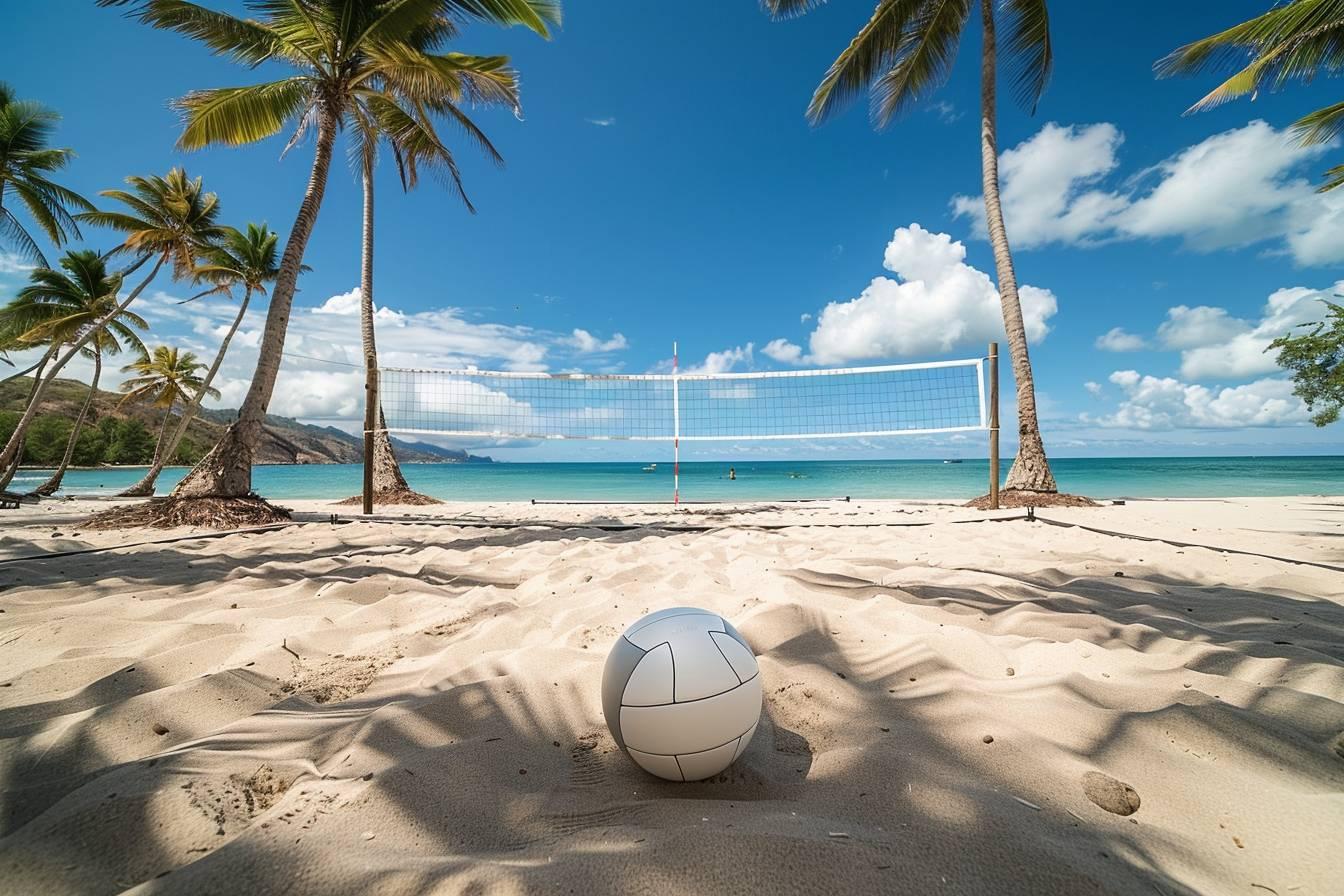🤸 To sum up :
Colored volleyballs have replaced white ones in official matches due to several key advantages. Here’s a brief overview :
- Enhanced visibility for players, officials, and spectators
- Standardization by governing bodies for consistency
- Better contrast against various backgrounds
- Improved television viewing experience
In the world of volleyball, colors play a crucial role in enhancing the game experience. As passionate sports enthusiasts, we’ve noticed a significant shift in the choice of volleyball colors over the years. 🏐 The transition from white to colored volleyballs for competition has been gradual but impactful. Let’s dive into the reasons behind this change and explore why white volleyballs are no longer the preferred choice for official matches.
The evolution of volleyball colors in competitive play
Volleyball, like many other sports, has undergone numerous changes since its inception. One of the most noticeable transformations has been the shift from white to colored volleyballs in competitive settings. This evolution didn’t happen overnight but was a result of careful consideration and practical experiences.
As a fitness coach with a keen eye for technical precision, I’ve observed that colored volleyballs, particularly those in blue and yellow hues, have become the standard for competitions and professional play. This change has been driven by the need to improve various aspects of the game, including visibility and overall player performance.
The International Volleyball Federation (FIVB) officially introduced colored volleyballs in international competitions in 1998. Since then, we’ve seen a steady increase in the use of these vibrant balls across all levels of competitive play. 📅 This shift has not only enhanced the visual appeal of the sport but has also addressed several practical concerns that were associated with white volleyballs.
Visibility : a game-changer for players, officials, and spectators
One of the primary reasons why white volleyballs are not used in official matches is the significant improvement in visibility offered by colored alternatives. As someone who pays close attention to the technical aspects of sports, I can attest to the importance of ball visibility during fast-paced games like volleyball.
Colored volleyballs provide better contrast against various backgrounds, making it easier for players to track the ball’s movement. This enhanced visibility is particularly crucial in the following scenarios :
- During intense rallies with rapid ball movements 🏃♂️
- In venues with varying lighting conditions
- Against the backdrop of players’ uniforms and the court surface
- For spectators watching from a distance or on television 📺
The improved visibility not only benefits the players but also aids officials in making more accurate calls. Referees and line judges can better track the ball’s trajectory, leading to fairer and more consistent rulings. This precision is vital in maintaining the integrity of the sport, especially at higher levels of competition.

Official regulations and standardization
Another critical factor in the absence of white volleyballs in official matches is the standardization imposed by governing bodies and leagues. As competitive athletes, we understand the importance of adhering to official regulations to ensure fair play and consistency across all levels of the sport.
Governing bodies like the FIVB and national volleyball associations specify the exact specifications for game balls used in competitions. These specifications often include color requirements, which typically favor colored volleyballs over white ones. This standardization serves several purposes :
- Ensures consistency across different tournaments and leagues
- Facilitates easier identification of official game balls
- Promotes fairness by eliminating potential advantages or disadvantages related to ball color
- Enhances the overall viewing experience for spectators and TV audiences
To illustrate the specific requirements for competition volleyballs, let’s look at a typical set of specifications :
| Characteristic | Specification |
|---|---|
| Color | Combination of blue and yellow (or similar approved colors) |
| Circumference | 65-67 cm |
| Weight | 260-280 g |
| Internal pressure | 0.30-0.325 kg/cm² |
These standardized specifications ensure that all players compete on a level playing field, regardless of the specific tournament or location.
The role of white volleyballs in training and recreational play
While white volleyballs may not be the preferred choice for official matches, they still hold a significant place in the volleyball world. As a coach who values comprehensive training methods, I recognize the importance of incorporating various types of balls in practice sessions.
White volleyballs are commonly used for practice, recreational play, and specific training drills. Their role in these settings is multifaceted :
- Skill development : White balls can be used to focus on technique without the distraction of colors 🏋️♂️
- Contrast training : Alternating between white and colored balls can improve players’ adaptability
- Special drills : Some coaches use white volleyballs for specific exercises or to simulate challenging visibility conditions
- Awards and recognition : White volleyballs are often used as commemorative items or trophies 🏆
It’s worth noting that some popular volleyball models, like the Wilson AVP beach volleyball, come in both white and colored versions. The white version is more commonly used for casual play and recreational settings, while the colored version is preferred for competitive matches.
In indoor volleyball, colored balls like the Tachikara SV-5WSC have gained popularity for both practice and games. However, white volleyballs remain a staple in many training facilities and recreational leagues, providing a classic touch to the sport we all love.
As we continue to embrace the evolution of volleyball equipment, it’s clear that both white and colored volleyballs have their place in the sport. While official matches may favor the vibrant hues of colored balls, the classic white volleyball will always hold a special place in the hearts of players and fans alike. 🤍🏐



